
MODULE 4 - ELK HUNTING GEAR
CHAPTER 2: WHAT'S IN MY PACK?

Hunting gear, for the reasons I just mentioned, can be very individualistic. The boots that I claim to be the very best aren’t going to be worth anything to you if they don’t fit your feet correctly. The elk calls that work the best for me are going to be worthless to you if you can’t make a sound with them. As I share the following information regarding the specific gear I personally use, please don’t take it as a marketing push. Perhaps it will interest you enough to research it further, but I share this information more as a generality of what items I carry in my pack, not so much for the brands or styles of gear I carry. However, I will tell you that I use gear that works, not gear I get paid to promote.
DISCLAIMER: It is true that I have "partners" who sponsor different aspects of my business endeavors, which allows me to live my dream of sharing my passion for elk hunting with you. But, my approach to gear and sponsors goes against the standard grain of the huntign industry. I find gear that works and I use it. Period. If that brand sees a benefit in having me promote their gear, great. If not, I will continue to use that gear anyway. Fortunately, I’ve worked hard for a long time, and some companies have found a benefit in partnering with our business to help promote their gear. But rest assured, if you see me using or in some way promoting gear, it isn’t because I am getting paid to use it. I am using it simply because it works!
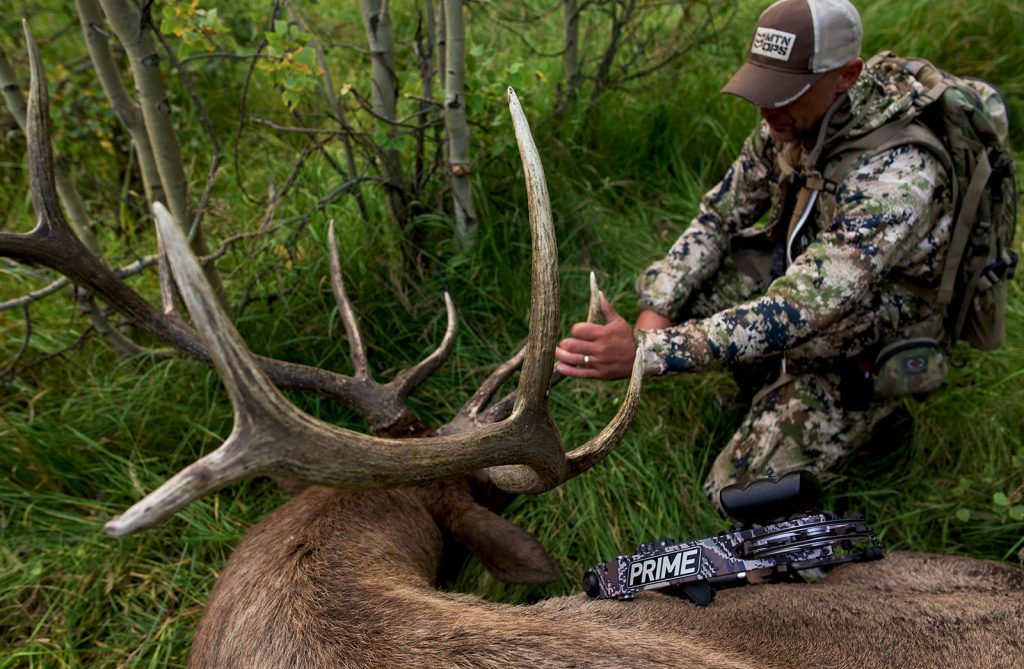
My style of hunting requires me to be prepared for two different scenarios: day hunts from a base camp, and bivy hunts for extended stays away from base camp. After several years of searching for a pack that will crossover effectively between these two styles of hunting, I have finally found one that allows me to efficiently hunt in both styles without needing two different packs. Fortunately, there are a handful of other packs that have been developed recently that also work well. Until recently though, I was forced to utilize a day pack and a separate bivy pack. There is nothing wrong with that system. In fact, it might end up being a better route to go for some folks. Regardless of how you decide to carry your gear, the actual gear you carry in each pack will differ.
I am a minimalist – to some degree – so I don’t carry much unnecessary gear. I keep the list pretty streamlined, but have very rarely felt like I needed something more. The main difference between the gear in a day pack and a bivy pack is that a bivy pack includes additional camping gear (tent, sleeping bag, stove, etc.).
Check out the video below to see the exact gear I carry in my packs. I’ll also provide an updated list of the gear in each of my packs after each video.
WHAT'S IN MY PACKS?
Below is a list of all the items (with weights) that I carry in my elk hunting Day Pack. The category codes (left side of the chart) are: E = Essential, H = Hunting, K = Kill, and O = Optional.
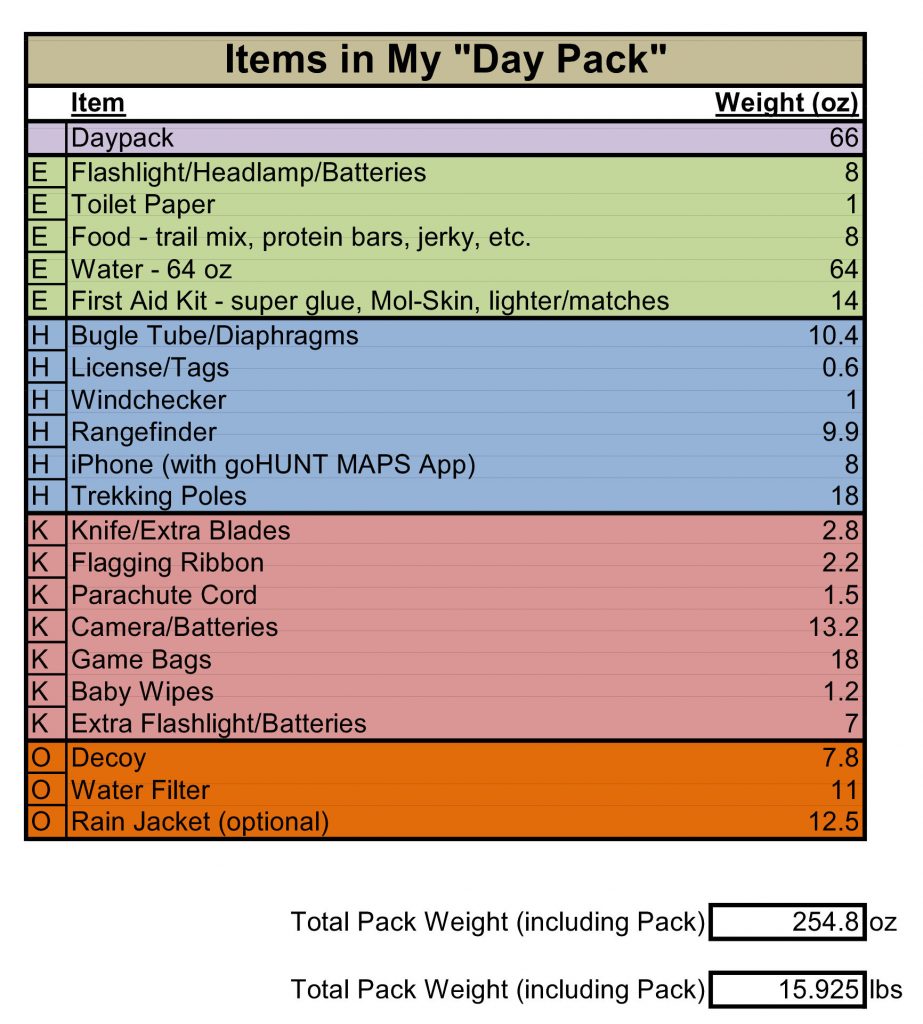
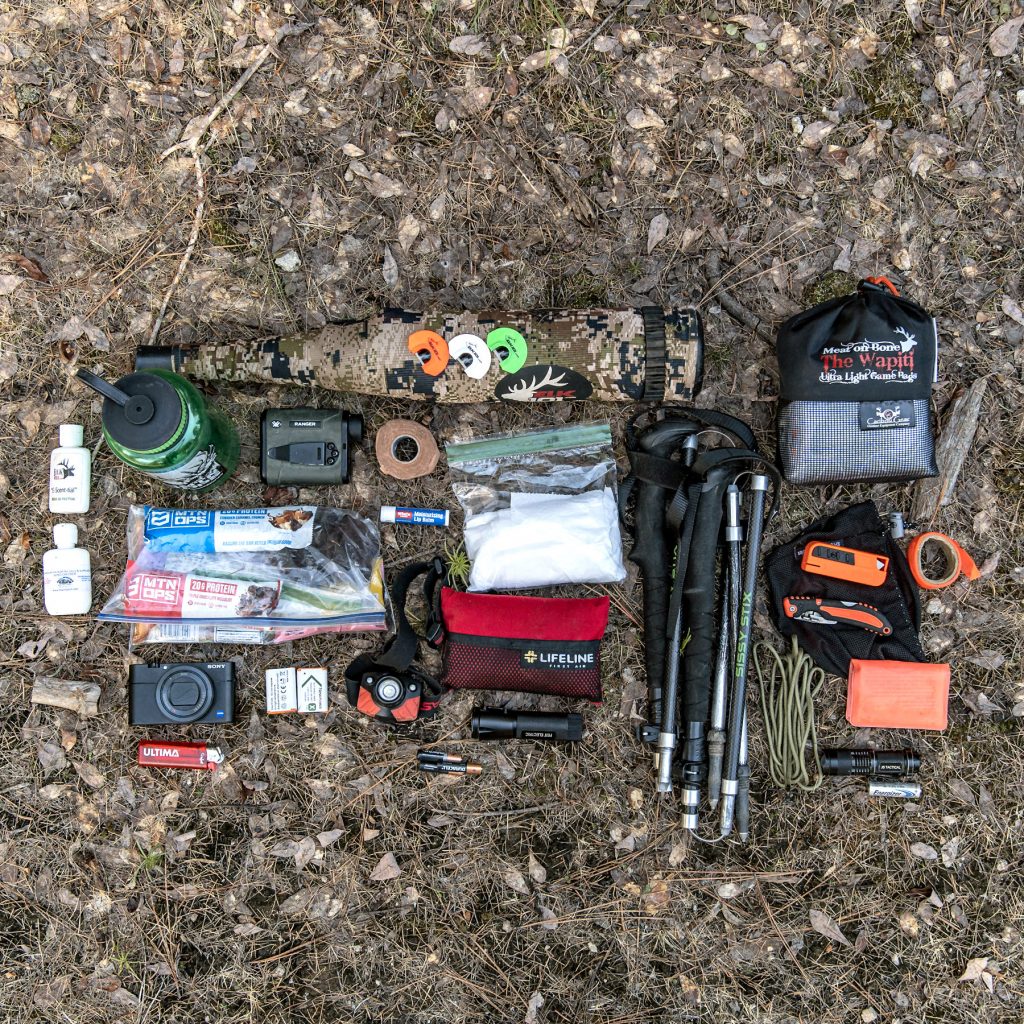
And here are the items (with weights) that I carry in my elk hunting Bivy Pack (For Bivy Packs, I add an additional category, C = Camping):
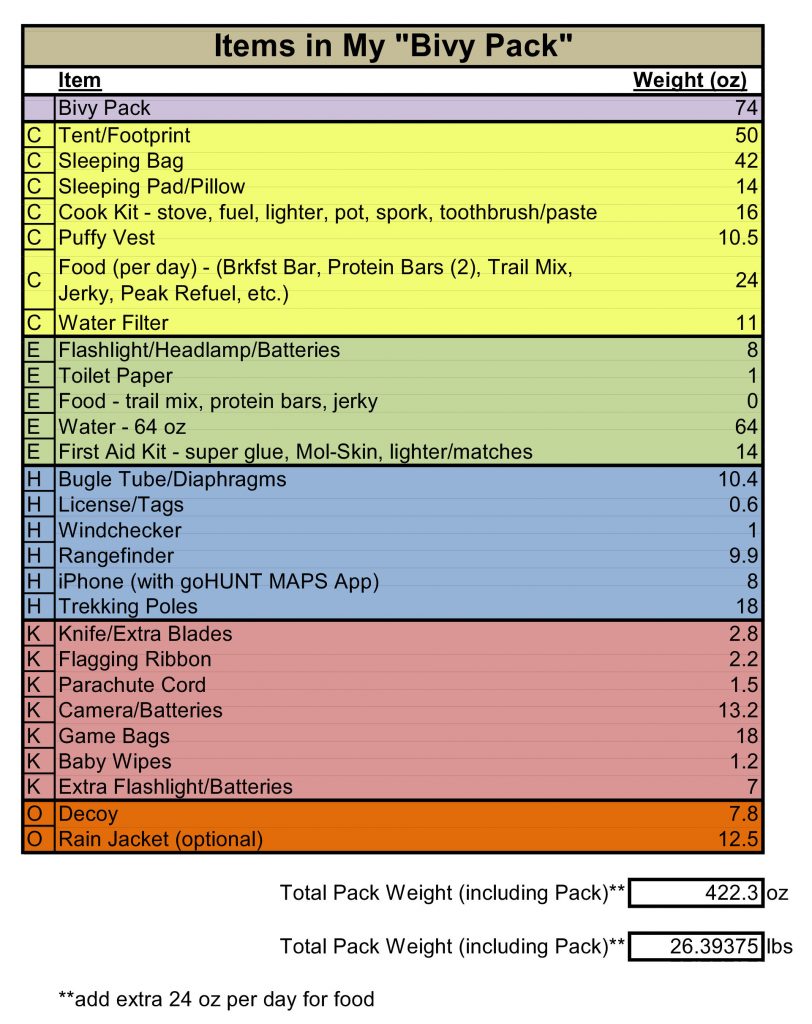
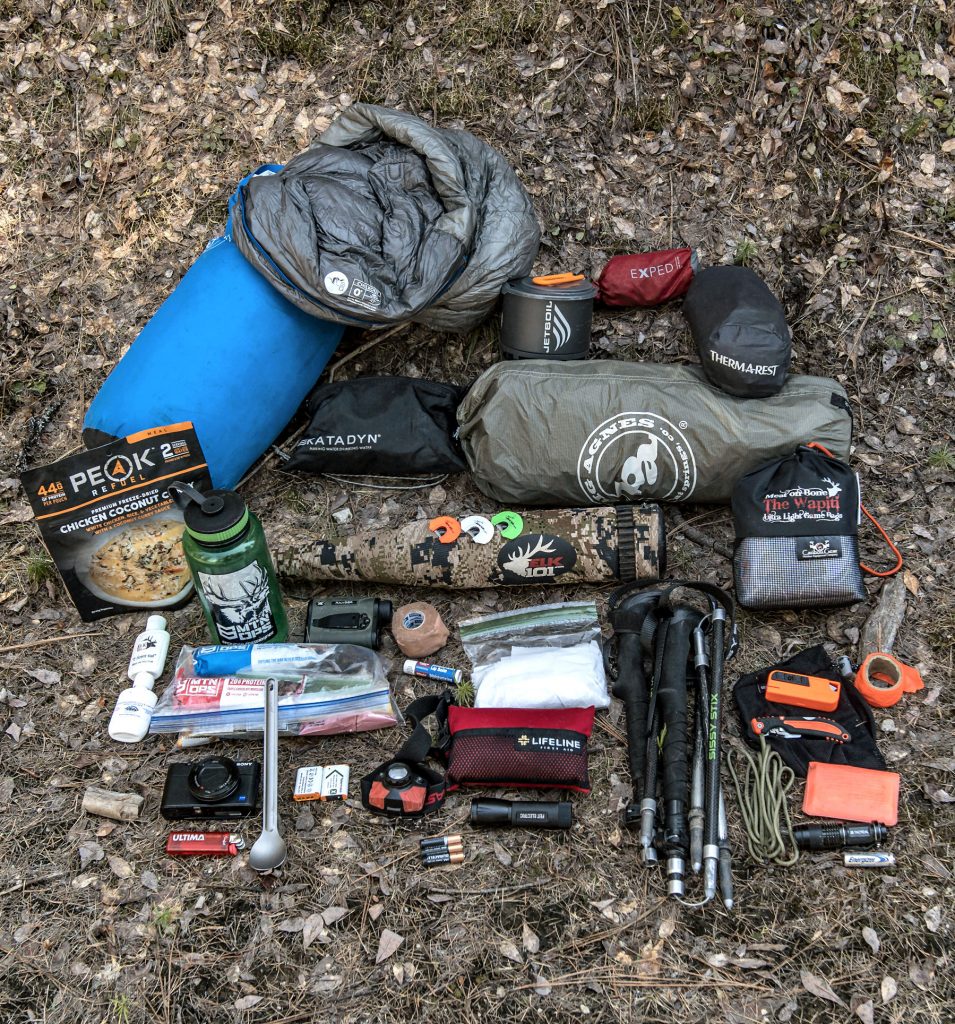
BEYOND THE BACKPACK
Aside from the gear that I carry on my back, there are several other pieces of gear that I rely on for elk hunting. Here is a complete list of all the specific elk hunting gear I personally use.
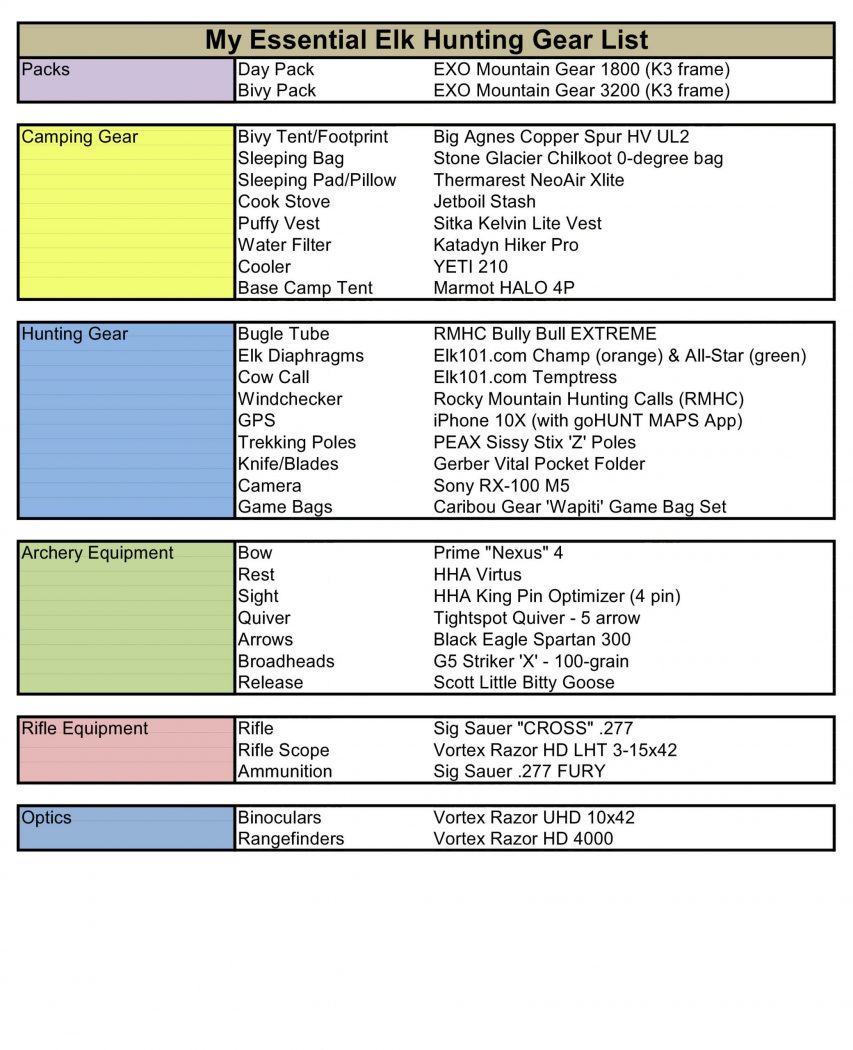
Now that you know the exact gear I rely on for elk hunting, I'm ready to talk about which items I feel are essential, and which ones I feel can be compromised without affecting the outcome of my hunts.
Click 'Next Chapter' Below to Continue to Chapter 3: Essential Elk Hunting Gear





